Marvel Chichen Itza: Mysterious Wonder of the World
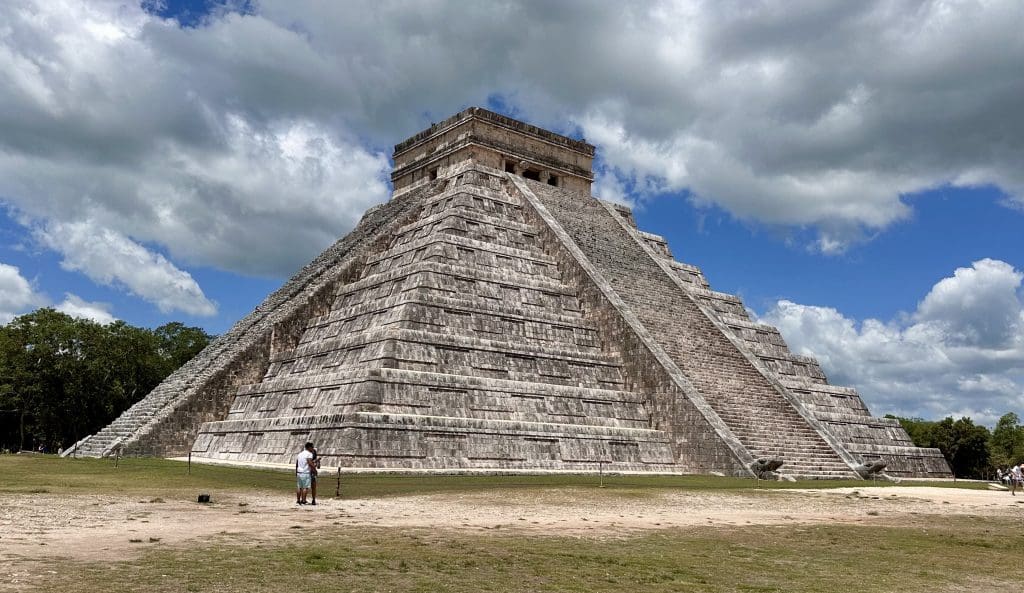
You can’t visit Cancun or the Yucatan Peninsula without exploring the mysteries of Chichen Itza, one of the New Seven Wonders of the World.
The Temple of Kukulkan, also known as El Castillo, comes to mind when you think of Chichen Itza. Yet the ancient city of Chichen Itza is much more than the famous and predominant pyramid structure.
It’s no secret the Maya people were experts in math and astronomy to construct this marvel in the pre-Hispanic city. They built the Temple of Kukulkan with 365 steps, symbolizing each day of the year, 91 steps on each of the four sides with the 365th step leading to the platform on top.
In addition, during the spring and autumn equinox, the sun casts a shadow in the shape of a snake. As the sun sets, the snake appears to descend down the pyramid’s north side to join the two stone serpent heads at the base. Chichen Itza — World Heritage Site — National Geographic
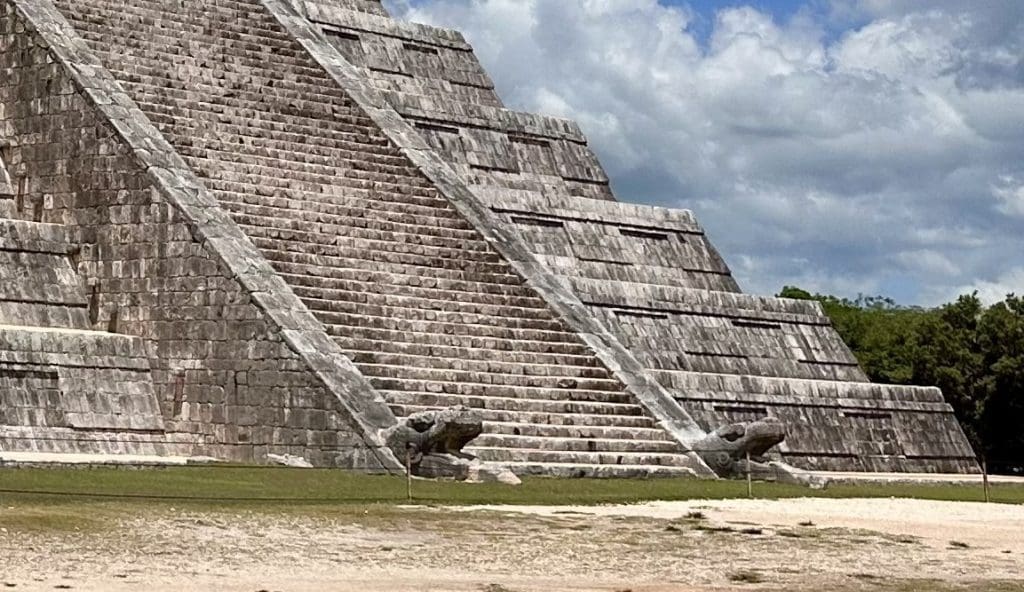
Kukulkan is the name of the serpent deity in Maya mythology. The temple towers 30 meters high, about the height of a football field. It is the tallest structure among the 26 ruins that make up Chichen Itza.
History of Chichen Itza, Wonder of the World
The Itza people, an ethnic subset of the Maya people, founded Chichen around the fourth or fifth century, although the exact period is in debate.
The city existed and thrived until about 800 A.D., then was abandoned for about 100 years before being resettled again around 900 A.D., historians believe. Then, the Toltecs invaded the area around 1000 A.D., bringing their own influences of architectural design and an aggressive culture. The inhabitants abandoned the city all together about 1250 A.D. Chichen Itza History | Important Dates and facts about Chichen Itza | Chichen Itza
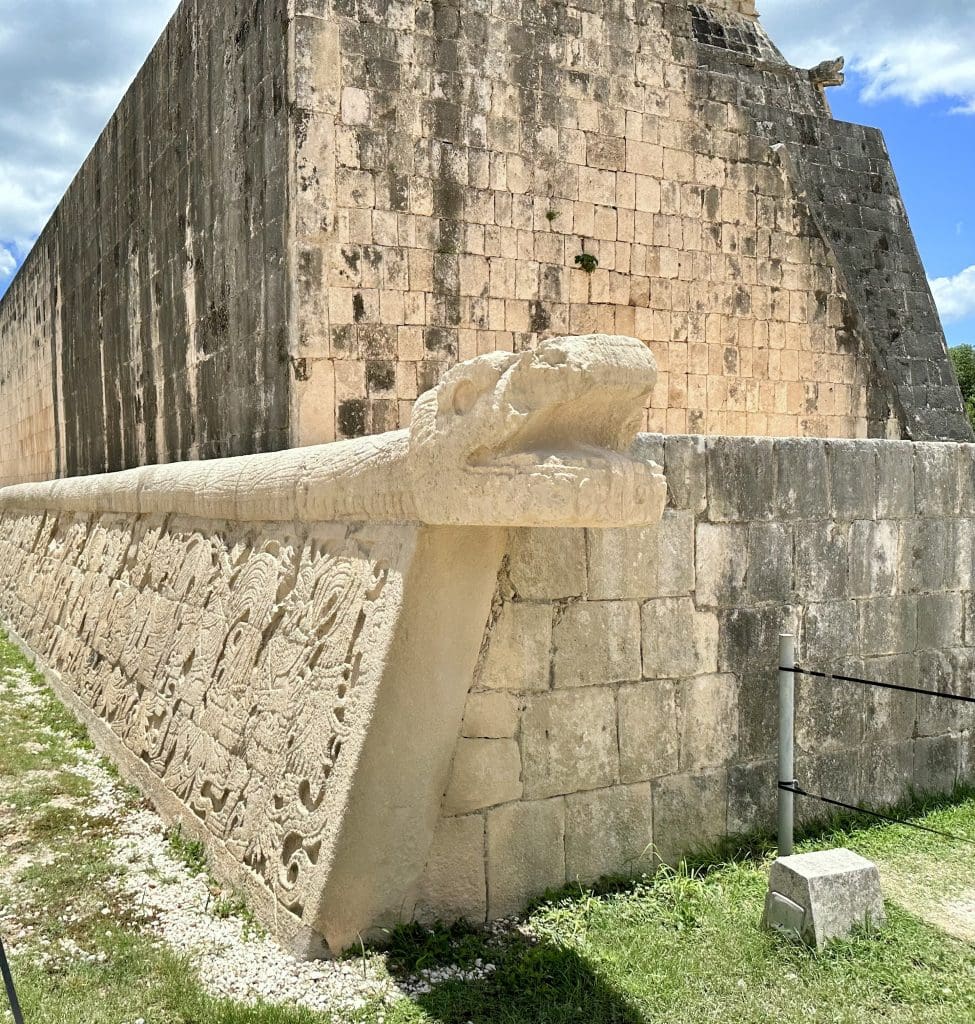
Chichen means “mouth of the well,” and Chichen Itza refers to “the mouth of the well of the Itza.” Chichen Itza ‑ Mexico, Pyramid & Facts | HISTORY
There were at least two natural “wells,” or cenotes, at the archeological site. One, called Xtoloc, is where the Maya people got their drinking water.
There are about two dozen other ruins in Chichen Itza spread across four square miles.
The Great Ball Game Court
After visiting the Temple of Kukulkan, you’ll want to walk around the Great Ball Game Court. Here, the Maya people played a ceremonial/ritual game to represent the symbolic re-creation of the mythical combat between night and day. The Ball Game | Mayan Ball game | Chichen Itza
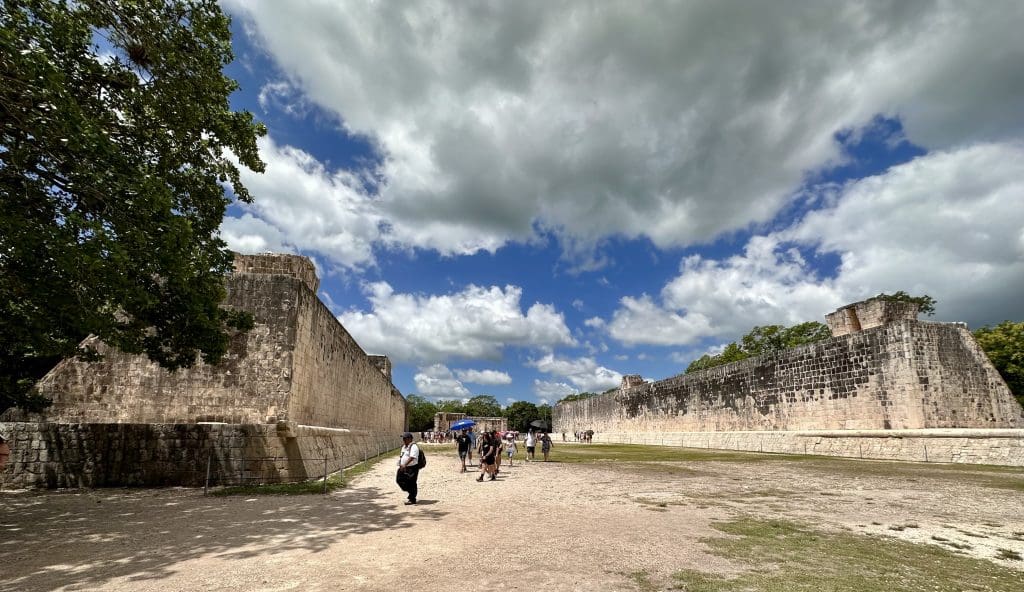
The rules of the game are a bit unclear. Yet, pictorial representations suggest the ball was knocked through the wall’s vertical stone rings with a player’s hips or thighs. A typical ball, made from liquid latex from rubber trees, weighed three to five kilos (6.5 to 11 pounds). The Ball Game | Mayan Ball game | Chichen Itza
This is the largest ball court in Mesoamerica, a park sign stated. Therefore, hitting the ball with the hip alone would be unlikely due to the height of the rings.
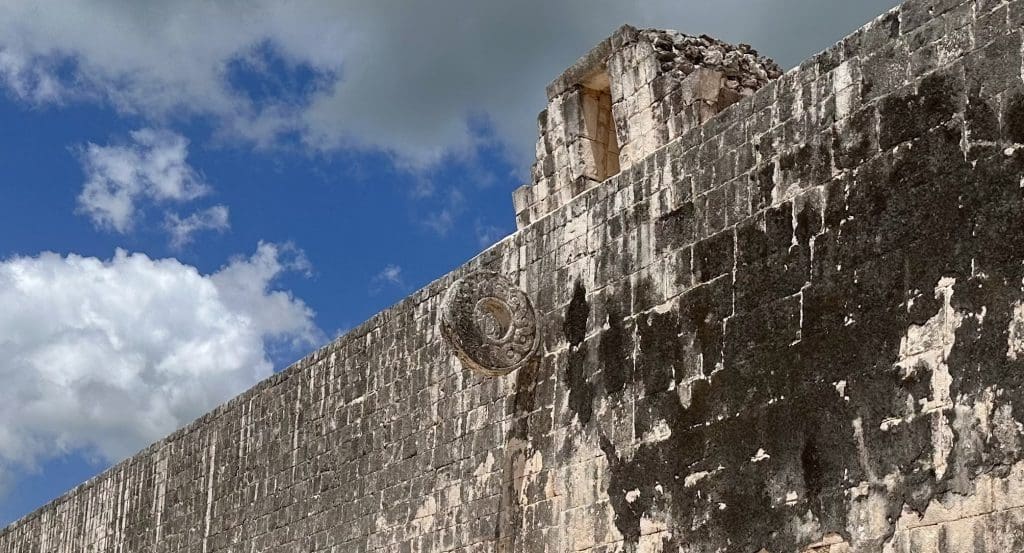
Besides two stone walls, there are temples at each end. The temples do not connect to the ball court walls. The field is 225-feet wide by 545-feet long. The winning team would present a head for decapitation to the losing team — that’s right the losing team — considered to be a great honor and ticket to heaven. The ball game in Chichen Itza | Mayan Culture | Chichen Itza
At the bottom of the slightly sloped east and west walls of the ball court, there are bas-reliefs carvings depicting warriors and sacrifices of ball players. Bas-reliefs, which are slightly raised from the surrounding surface, are in other areas of Chichen Itza.
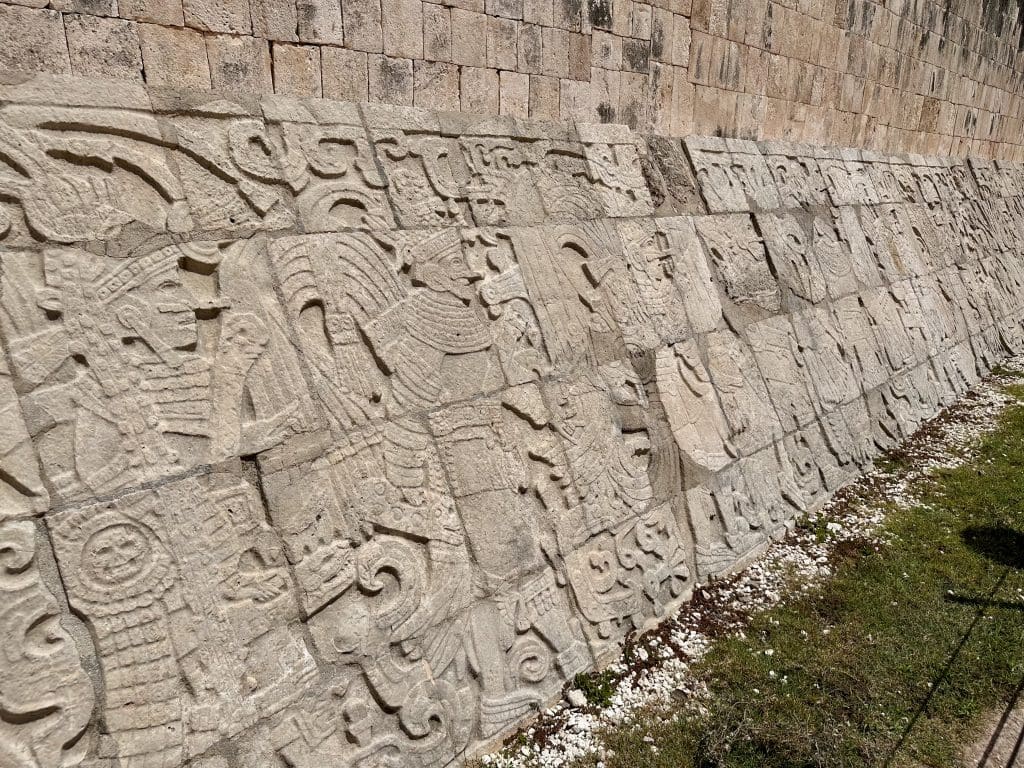
According to the touring company www.chichenitza.com, the court is an “acoustic phenomenon,” and you can hear voices from the opposite side of the field as the sound reverberates along the walls.
The Temple of the Bearded Man
On the northern end of the ball court stands the North Temple, also known as The Temple of the Bearded Man.
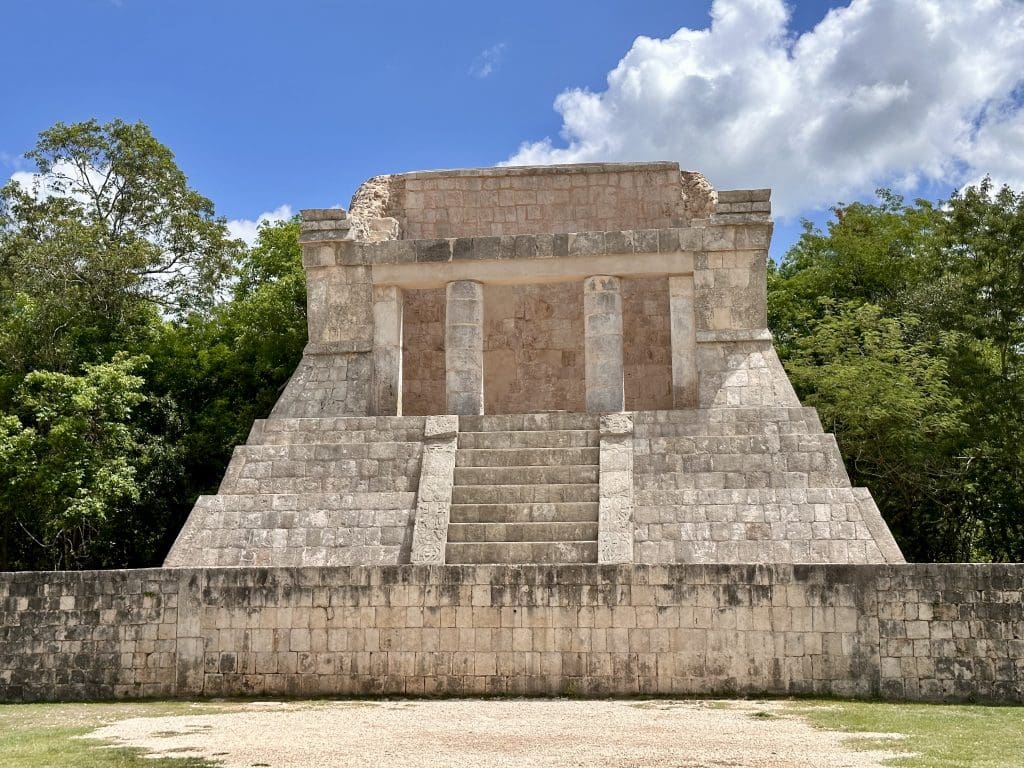
The Temple of the Bearded Man faces the ball court and would likely be where nobles and dignitaries watched the games. It got its name from an inner wall with a carving of a man different than the Maya people with what looks like facial hair on the chin. Chichen Itza ‑ Mexico, Pyramid & Facts | HISTORY
The Temple of the Jaguars
On the south end of the eastern wall is The Temple of the Jaguars.
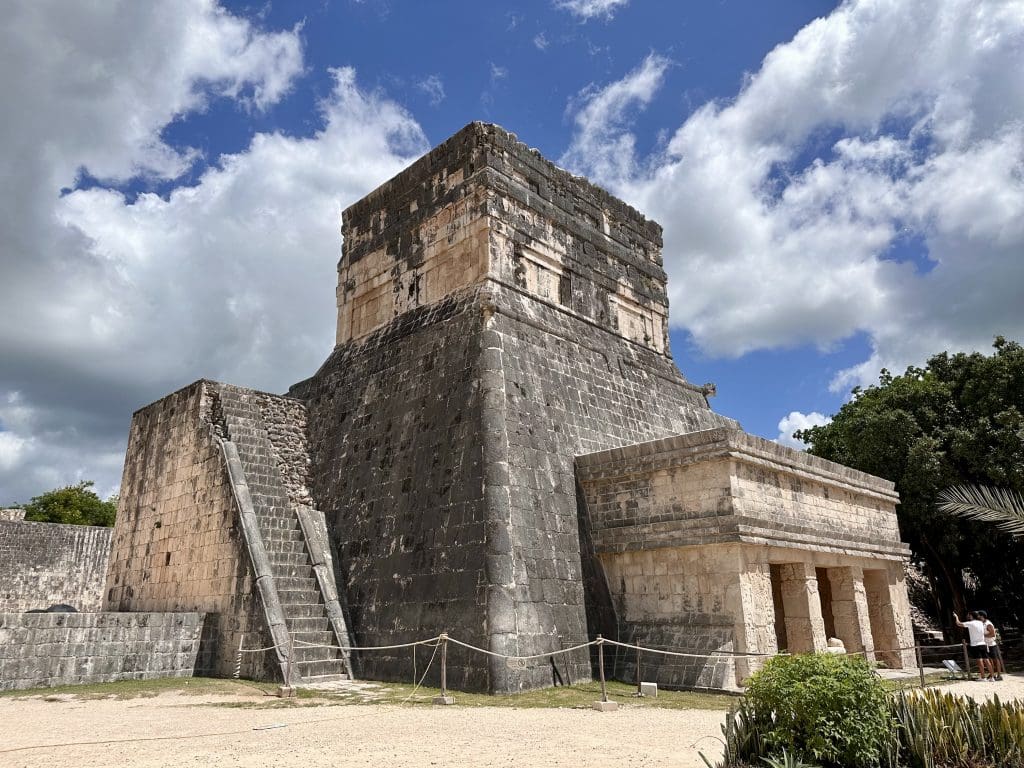
The Temple of the Jaguars presents the processions of dignitaries and battle scenes offering a glance into the history of Chichen Itza, a sign posted stated.
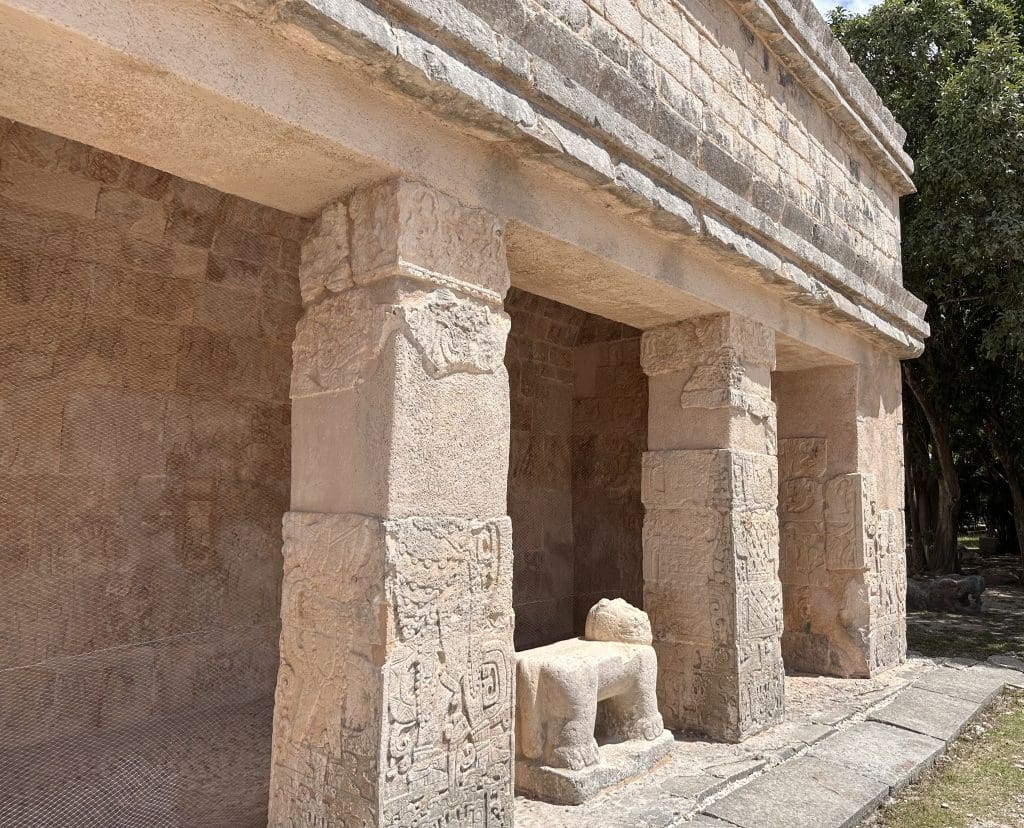
To round out The Great Ball Court area, on the southernmost end is the South Temple.
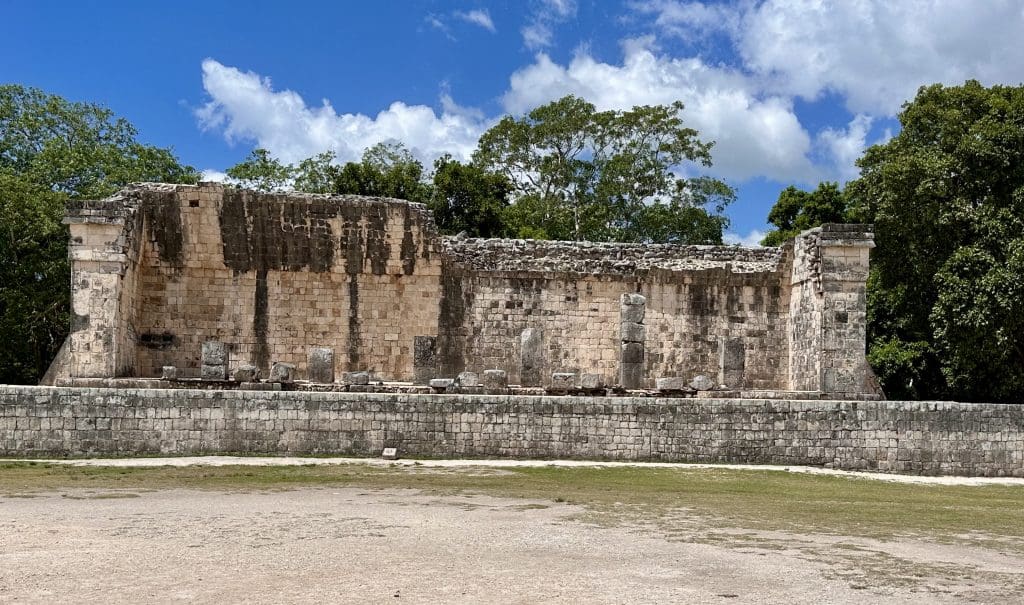
Chichen Itza, a UNESCO World Heritage Site since 1988, became one of the New Seven Wonders of the World in 2007. As previously stated, there were debates when the city established, but most research indicates it was between 400 to 550 A.D. The History Channel has noted it became a significant political and economic center for the Mayan people by 600 A.D. Chichen Itza ‑ Mexico, Pyramid & Facts | HISTORY
Tzompantli served as an altar for skulls
Next, you’ll pass the Tzompantli, known as the Platform of the Skulls. The platform served as a ceremonial altar to display skulls related to the ritual sacrifices during that time to their gods. Tzompantli at Chichen Itza: Platform of the Skulls 2025
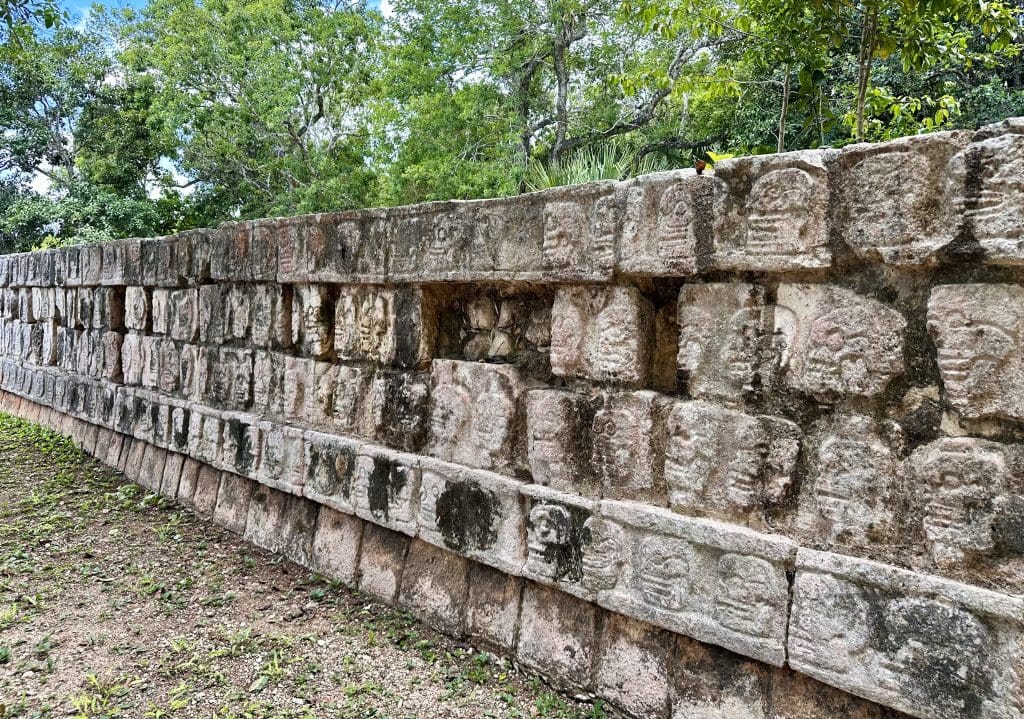
There are over 500 bas-relief skulls carved on four rows on the 197-foot-long by 39-foot-wide walls. The Tzompantli of Chichen, dedicated to the deceased, is said to be the oldest tzompantli ever found. The Tzompantli | The Plaftorm of the Skulls | Chichen Itza
Platform of Venus
The Platform of Venus was probably used for ceremonial purposes, possibly rites and dances. The Venus Platform | Chichen Itza The 13-foot-high platform has four flights of stairs ascending to the platform on each side, with serpent heads adorning each side.
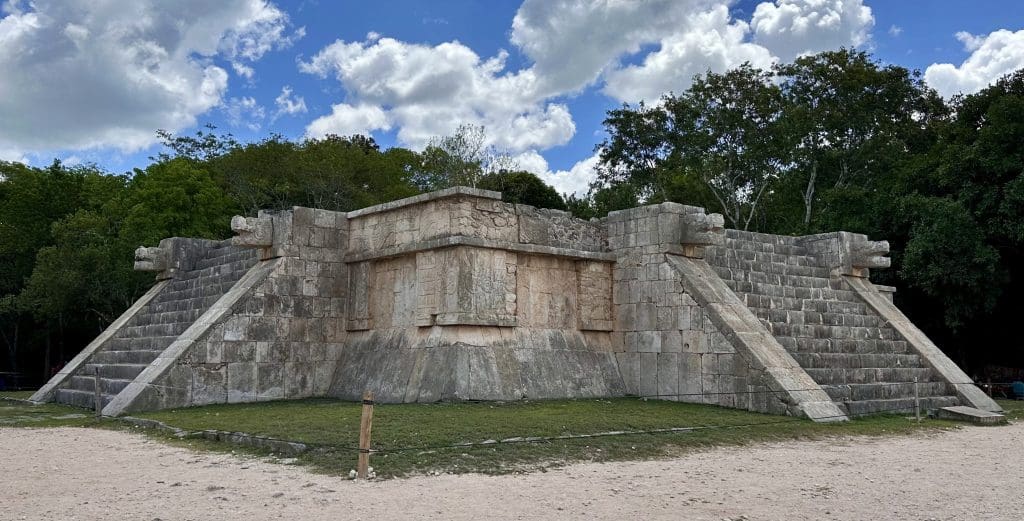
Mythical creatures representing jaguars, eagles, snakes, and humans decorate the side panels. Each corner has glyphs associated with the planet Venus, according to a sign posted at the site.
Temple of the Warriors
Maya and Toltec influences built The Temple of the Warriors around the 10th century. Temple of the Warriors in Chichén Itzá: History and Origin They built it as a stepped pyramid with a flat, rectangular top, and rows of sculpted columns depicting warriors and mythological figures, according to the Maya archeological touring company Chichen Itza 7.
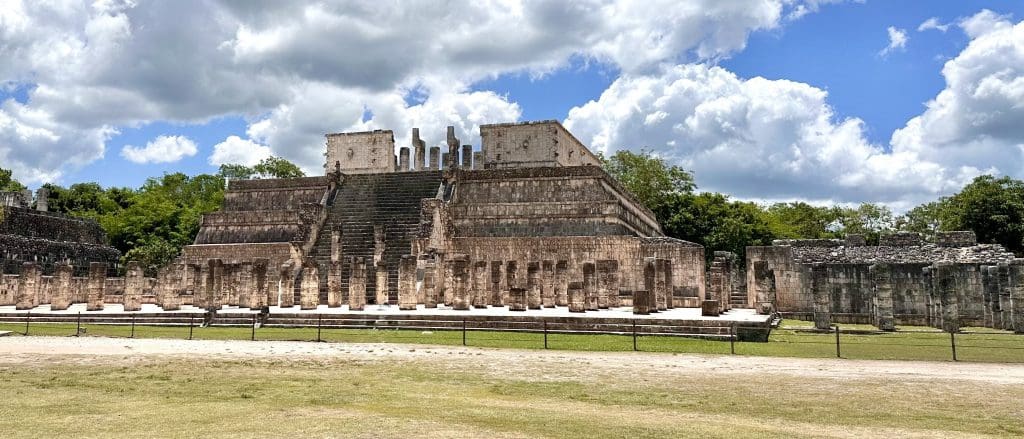
The temple was dedicated to the gods of war and sacrifice where human sacrifice was part of ritual ceremony. Temple of the Warriors in Chichén Itzá: History and Origin
The Group of the One Thousand Columns
Surrounding the Temple of the Warriors is the Group of the One Thousand Columns. Although there are only about 200 columns, the name “One Thousand Columns” inspires greatness. The Thousand Columns Group | Chichen Itza
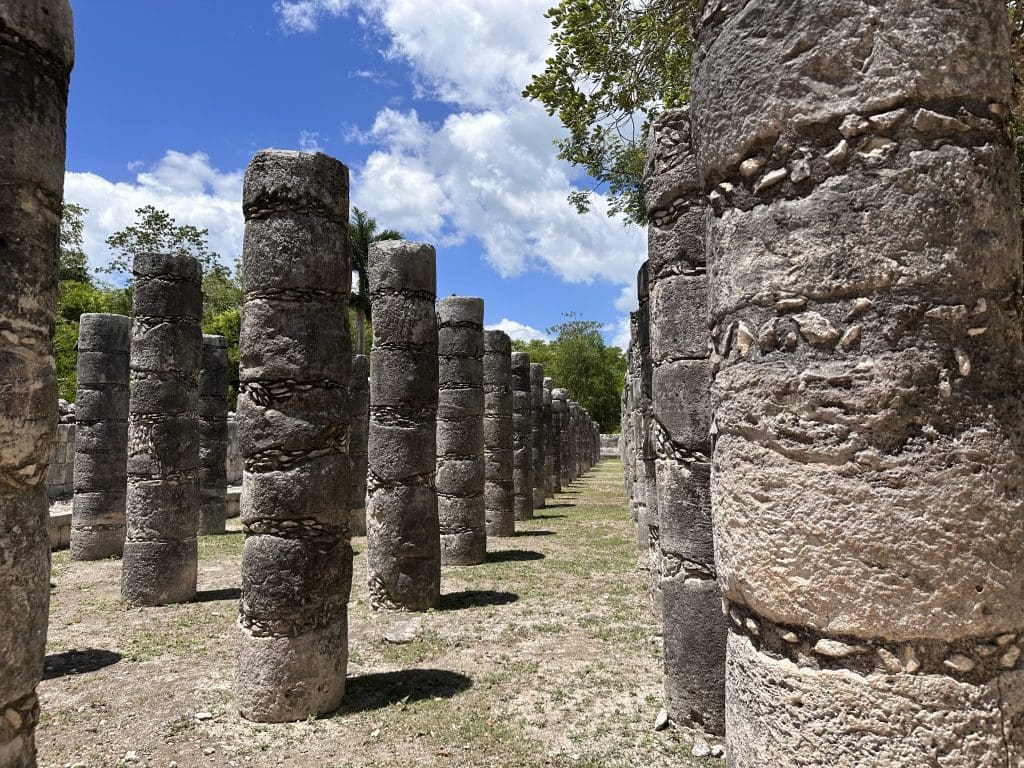
Built between 900 and 1200 A.D., you can see remnants of stucco. Historians think the columns were once painted and supported a frieze or a roof. The Thousand Columns Group | Chichen Itza
Archeologists believe the inhabitants painted many of the structures here in bright colors of red, blue, and/or green, but over time the paint wore off the limestone rock seen now. Chichen Itza ‑ Mexico, Pyramid & Facts | HISTORY
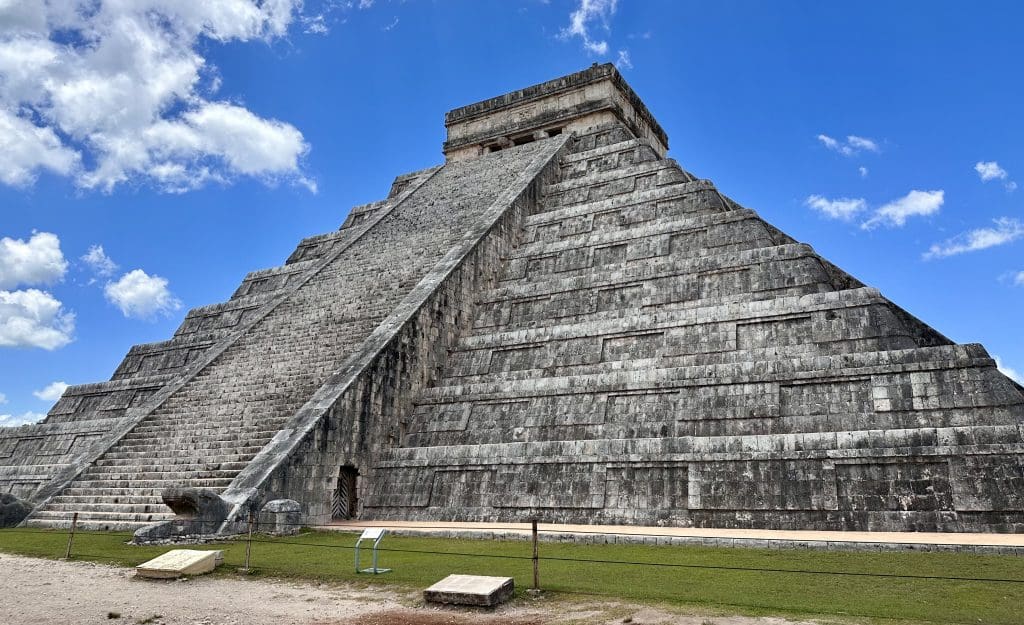
There are other sites to check out at Chichen Itza, including El Caracol Observatory, El Osario, and the Sacred Cenote.
Archeologists have found ceremonial items in the Sacred Cenote, such as gold, jade, and turquoise, as well as the bones of about 200 human remains. Historians believe the humans were killed before being thrown into the natural well as a sacrifice, and this thought is based on markings found on the bones. Chichen Itza ‑ Mexico, Pyramid & Facts | HISTORY
There are so many interesting sites to see and things to learn about the Maya civilization– you can see why Chichen Itza is one of the Seven New Wonders of the World.
Chichen Itza is under the protection of INAH, Mexico’s National Institute of Anthropology and History. Chichen Itza History | Important Dates and facts about Chichen Itza | Chichen Itza
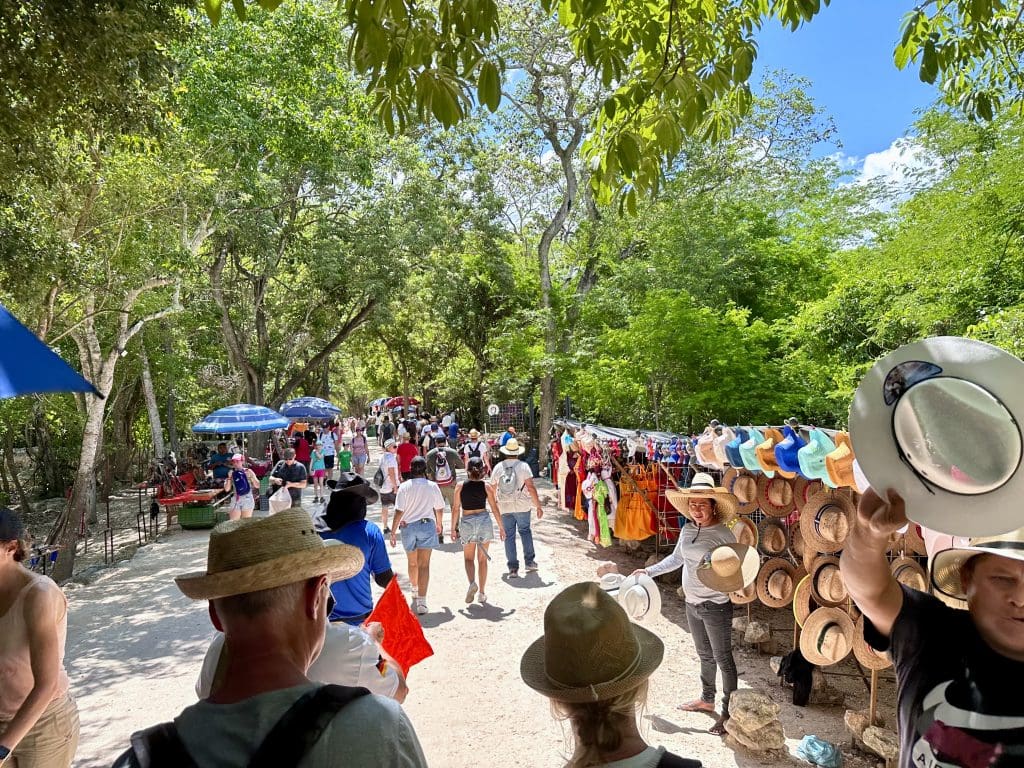
Know before you go:
- Visitors can’t climb stairs, walls, temples, or other structures, due to safety reasons. There needs to be preservation of Chichen Itza for those who want to explore the Wonders of the World.
- It can get extremely hot, be sure to check the weather, dress appropriately, and wear sun protection. We went in June, and it was extremely hot.
- There are vendors as you walk into and out of the site selling replicas of Maya artifacts, including calendars, games, and other souvenir items like hats and clothing.
Be sure to check out my other stories at https://travellikeatourist.com like Royal Gorge Bridge has Amazing Activities in Beautiful Setting – Travel Like A Tourist and Take a Trip Down Memory Lane at American Sign Museum – Travel Like A Tourist
Follow me on Facebook, Instagram, LinkedIn and X.
